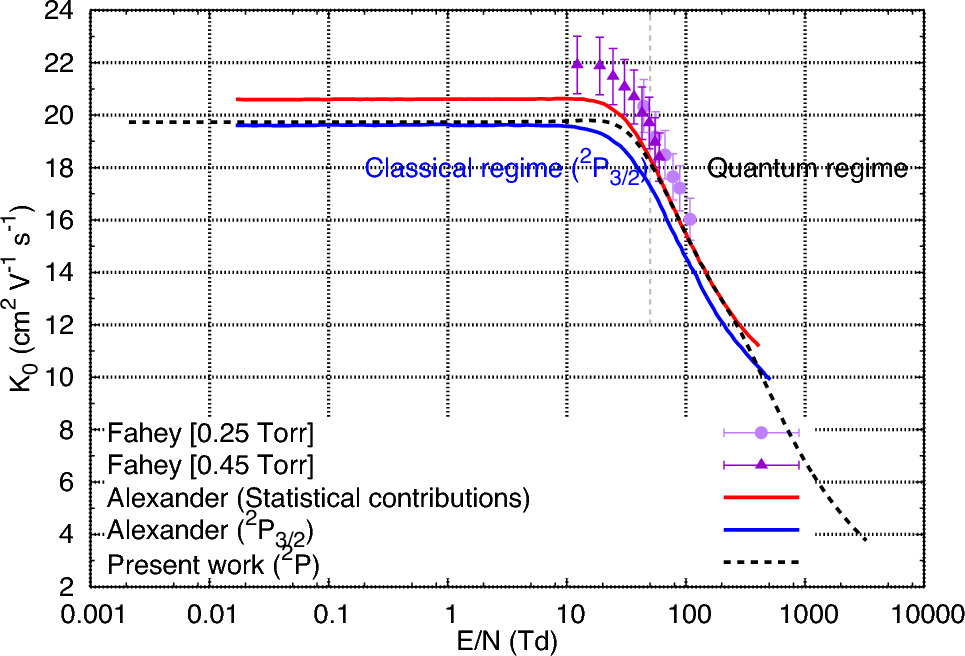https://doi.org/10.1140/epjd/s10053-025-00999-8
Regular Article - Atomic and Molecular Collisions
Transport properties of Si ions moving through He gas
1 Laboratoire d’Électronique Quantique, Faculté de Physique, USTHB, BP32, El-Alia, Algiers, Algeria
2 Science Department, Chatham University, 15232, Pittsburgh, PA, USA
Received:
4
January
2025
Accepted:
5
April
2025
Published online: 26 May 2025
In this study, we revisit the mobility and diffusion coefficients of Si+ ions in their ground 2P state moving in helium gas using quantum–mechanical transport cross sections. We have built the Si+-He potential from reliable and very recent energy points. These data points used in our construction are smoothly connected to adequate long- and short-range shapes, and calculations of classical cross section coefficients are also calculated. For the first time, we report transport coefficients for Si⁺(2P) across a wide range of reduced fields (10–1000 Td) and temperatures (100–500 K), achieving uncertainties of < 3% (low T) and < 5% (high T). While prior theoretical studies (Tuttle et al. in Mol Phys 115:437, 2017; Davies et al. in Phys Chem Chem Phys 24:7144, 2022) could not resolve whether the 2P3/2 or 2P state aligns with experimental mobility data (Fahey et al. in J Chem Phys 75:669, 1981), our results demonstrate that neither the 2P ground state nor its substates reproduce Fahey’s measurements within experimental uncertainty (± 5%). The discrepancy (8–12% at E/N < 50 Td) arises from quantum resonances in the momentum-transfer cross section (see Fig. 7, inset), which are absent in classical models. We corroborate Viehland’s hypothesis (Viehland et al. in Int J Ion Mobil Spectrom 20:95, 2017) that the low-pressure conditions (0.25–0.45 Torr) in Fahey’s experiment suppressed collisional excitation, favoring a non-statistical population of spin–orbit states. These findings challenge assumptions about ion–neutral interactions at low energies and underscore the need for state-resolved experiments.
Copyright comment Springer Nature or its licensor (e.g. a society or other partner) holds exclusive rights to this article under a publishing agreement with the author(s) or other rightsholder(s); author self-archiving of the accepted manuscript version of this article is solely governed by the terms of such publishing agreement and applicable law.
© The Author(s), under exclusive licence to EDP Sciences, SIF and Springer-Verlag GmbH Germany, part of Springer Nature 2025
Springer Nature or its licensor (e.g. a society or other partner) holds exclusive rights to this article under a publishing agreement with the author(s) or other rightsholder(s); author self-archiving of the accepted manuscript version of this article is solely governed by the terms of such publishing agreement and applicable law.





